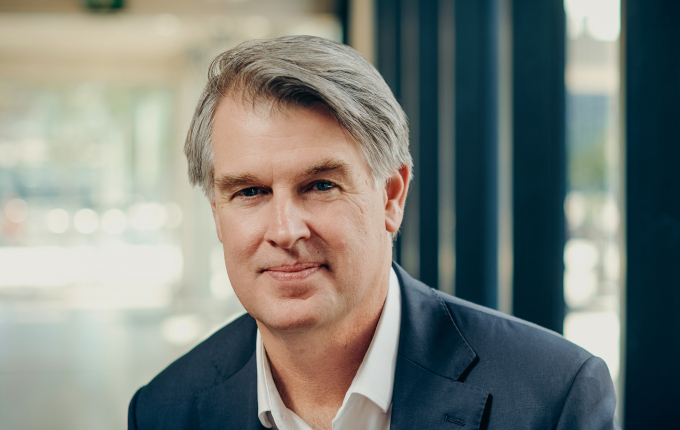MLC is reviewing its investment strategy for its MySuper life-cycle products and is expecting to increase its allocation to growth assets.
MLC is planning to increase the allocation to growth assets in its MySuper life-cycle options in an effort to maximise retirement balances. The measure is part of a series of changes to the company’s superannuation and retirement options as it has rebranded from the Insignia Financial name to MLC.
Dan Farmer, Chief Investment Officer at MLC Asset Management, told [i3] Insights the changes would boost growth assets for younger members by 11 per cent.
“We’re looking at the glide path for the MySuper fund and looking at having a higher allocation of growth assets at the earlier stages of the glide path. The working assumption at the moment is around 90 per cent growth and staying in those growth assets for longer in the glide path,” Farmer said.

We're looking at the glide path for the MySuper fund and looking at having a higher allocation of growth assets at the earlier stages of the glide path. The working assumption at the moment is around 90 per cent growth and staying in those growth assets for longer in the glide path
According to the product disclosure statement of MLC’s MySuper option, members under the age of 55 – the youngest cohort – have a target growth asset allocation of 75 per cent, while the investment team can move this allocation within a bandwidth of 65 per cent to 95 per cent.
Farmer said the current growth allocation sits at 79 per cent, which would mean an increase by 11 per cent.
“[This is about] looking to make sure members have got as high a balance as possible at retirement. But then also optimising the shape of those assets in terms of accessing the pension,” he said.
The investment team was in the middle of the investment review and Farmer expected to finalise the changes in 2026 as the review would need to be signed off by its trustees.
Getting the Essentials Right – Transitioning to Retirement
Farmer made the comments after a presentation to clients in Sydney last week. The event was part of the rebranding campaign for Insignia Financial to MLC and focused on the company’s approach to retirement.
MLC has among the highest number of retired members among Australian super funds. It serves about 167,000 retirees, more than industry behemoths AustralianSuper and Australian Retirement Trust.
As such, the fund was keen to ensure a smooth transition from accumulation to retirement and starting members off well in the early stages of retirement.
Part of this strategy means holding growth assets for longer, Andrew Howard, Executive Director of Strategy & Innovation at MLC, said at the event.
“Many funds with their investment strategy will start to de-risk [the] asset allocation in the lead-up to retirement. But if you de-risk too early or too much, then someone … will miss out on the returns that will matter later,” Howard said.
He invoked the 10-30-60 rule, defined by Don Ezra, Bob Collie and Matthew X Smith in their 2009 book The Retirement Plan Solution – The Reinvention of Defined Contribution.
In this book, the authors show that – at an assumed investment rate of return of 7.5 per cent a year over the life of a superannuation member – 10 per cent of the income spent in retirement will come from contributions, 30 per cent from investment earnings in accumulation and 60 per cent from investment earnings in decumulation.
In other words, the investment returns generated early on in retirement are crucial to the overall wealth accumulation.
“We’re redesigning our MySuper investment strategy to ensure [a member] benefits from more exposure to growth assets in the transition to retirement,” Howard said.
Apart from the higher allocation to growth assets, MLC has also decided to introduce a pension bonus rate on investments for members transitioning from an MLC accumulation option into a retirement option.
This bonus rate is essentially a one-off refund of money the fund has set aside for capital gains tax.
MLC has also introduced a so-called Retirement Boost, a form of annuity that is structured in such a way as to optimise retirees’ entitlements to the age pension.
Underweighting Equities can be Dangerous
A higher allocation to growth assets in portfolios will see the fund more exposed to equities, an asset class that has received much attention for being expensive at current valuations.
But unlike some of his peers, Farmer continues to hold an overweight to international equities as he sees no clear catalyst for the market to be dramatically repriced anytime soon.
“If we look through our current cycle, despite the negative headwinds, we’re still keeping a mildly positive stance to pro-growth assets, so mildly positive to equity markets, which has held us in good stead,” he said during the presentation to clients.
“We’re a little bit overweight, compared to our long-term benchmark, global equities. So in emerging markets, you see better quality. The valuations in emerging markets are a little better.
“A lot of our competitors have been negative equities. That’s cost them because equity markets have gone up. So we’re holding a mildly positive position, but very cautiously, watching those valuations and watching the risks.”
He is less positive on the Australian market, but still holds a neutral position to Australian equities compared to the benchmark.

Going underweight equity markets is often very tempting, but it's extremely, extremely dangerous. The Australian market has done 11 per cent or more over the last 12 months. So we're holding neutral, but we're very cautious on valuations
“Where we are mildly positive on global and emerging market companies, [in] Australia we are less so for reasons of quality,” he said.
“I’m not saying we’ve got bad-quality companies here, but there are more cyclical elements that probably don’t have the underlying, let’s call it, thematic strength of the tech companies in the US.
“So we’re neutral Australia.
“We’re not underweight. Going underweight equity markets is often very tempting, but it’s extremely, extremely dangerous. The Australian market has done 11 per cent or more over the last 12 months. So we’re holding neutral, but we’re very cautious on valuations.”
In order to manage risk, MLC is using derivatives to hedge some of its equity exposures, but he pointed out it isn’t a complete fail-safe.
“A very strong part of the MLC heritage is that we have a very strong derivatives capability, where we put protection strategies in place. That doesn’t mean we’re 100 per cent protected, but we take some of that drawdown pain out as we see those risks in markets elevate,” he said.
_________
[i3] Insights is the official educational bulletin of the Investment Innovation Institute [i3]. It covers major trends and innovations in institutional investing, providing independent and thought-provoking content about pension funds, insurance companies and sovereign wealth funds across the globe.


